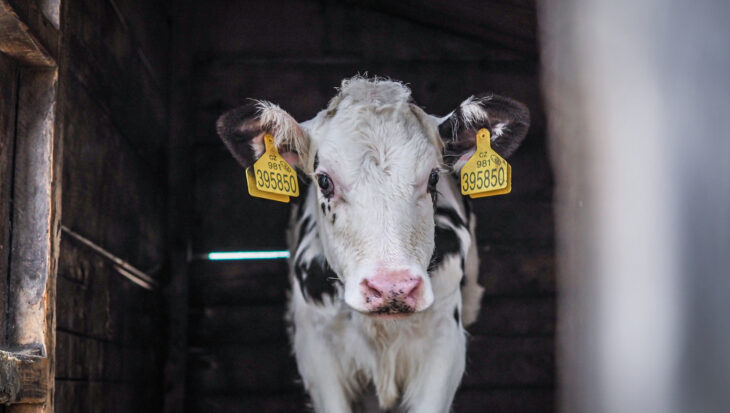- DLRM supports the adoption of the Precautionary Principle, as set out in the above White Paper, i.e. “Whenever reliable scientific evidence is available that a substance may have an adverse impact on human health and the environment but there is still scientific uncertainty about the precise nature or magnitude of the potential damage, decision-making must be based on precaution in order to prevent damage to human health and the environment”.
- DLRM believes that REACH (Registration, Evaluation and Authorisation of Chemicals) should be based only on those evaluations which are methodologically applicable to human beings, and to the environment, respectively.
- DLRM supports the need to recognise non-EU test results, based on the use of a globally harmonised testing methodology.
- DLRM calls for a total and immediate ban on the use of live animals in the testing of chemical compounds, whether for purposes of risk assessment, classification, or other related purposes. This should not be taken to mean that chemical compounds require no safety testing, but rather that the use of animals is a crude, unreliable and very cruel method of testing such chemicals, with poor correlation to the human being.
DLRM’s justification for a ban on the use of live animals in the testing of chemical compounds:
- Species differences. The concept of selective toxicity implies that the results of animal tests cannot be relied upon to protect human beings from chemical toxicity, with any degree of confidence (see fig 1). For example, the most common laboratory animals, the mouse and the rat, have been shown to exhibit major differences from humans in the function of a major endogenous detoxication agent, glutathione, which protects against chemical toxicity (1). See fig 2 for a comparison of lethal doses in man and animals. There is no logical basis on which to extrapolate results from animals to man. The figures shown for human beings are based on accidental poisonings, suicide attempts, and the like.
- Species differences equally apply to mutagens, carcinogens and teratogens (see figs 3 and 4).
- Professor Gerhard Zbinden, former toxicological consultant to the World Health Organisation: “Most adverse reactions which occur in man cannot be demonstrated , anticipated or avoided by the routine subacute and chronic (animal) toxicity experiment” (2).
- Most of the information on human toxicity is obtained from national or regional poison centres, or from hospitals. Medical doctors who treat human poison cases, rely primarily on symptomatic treatment, based on human experience. Where a specific antidote to a poison exists, it is normally given to effect, and in any case is based on human dose response, not animal dose response.
- Scientific methods exist which are methodologically applicable to human beings, and should therefore be used, to the exclusion of animal tests:
– human blood and tissue samples;
– epidemiology;
– in vitro toxicology;
– molecular toxicology;
– computational modelling;
– physicochemical techniques;
– structure-activity relationship (SAR); see refs (3) and (4);
Conclusion
There can be no excuse for continuing to rely on animal toxicity data as the “golden standard” in the 21st Century. Both politicians and the general public ought to be asking scientists and regulatory authorities why the Draize test (developed in 1944) has still not been abolished, 57 years later. By the same token, politicians and the general public ought to be asking scientists and regulatory authorities why the new, non-animal methods are being measured against the old animal data, instead of against human data. Equally absurd is the fact that, while it can take as long as 5-10 years for a non-animal method to attain validation, it is being compared against a live animal test which very likely was never validated:
“Most of the animal tests we accept have never been validated. They evolved over the last 20 years, and the FDA is comfortable with them ” (5).
Fig 1: Metabolism (in hours) of various drugs
| Drug |
Human |
Rhesus Monkey |
Dog |
Mouse |
Rat |
Rabbit |
Cat |
| Hexobarbitol |
6 |
|
4.3 |
0.3 |
2.3 |
1 |
|
Meperidine
(Dermerol) |
5.5 |
1.2 |
0.9 |
|
|
|
|
Phenylbutazone
(Butazolidin) |
72 |
8 |
6 |
|
6 |
3 |
|
Ethyl biscoumacetate
(Tromexan) |
2 |
|
21 |
|
|
2 |
|
| Antipyrine |
12 |
1.8 |
1.7 |
|
|
|
|
| Digitoxin |
216 |
|
14 |
|
18 |
|
60 |
| Digoxin |
44 |
|
27 |
|
9 |
|
27 |
Taken from “The Cruel Deception” by Dr Robert Sharpe. Source: R. Levine, Pharmacology: Drug Actions & Reactions (Little, Brown & Co, 1978).
Fig 2: Human acute lethal doses (LDLO) and animals LD50s (oral)
| Chemical |
Humans LDLO
(mg/kg) |
LD50 (mg/kg) |
| Rat |
Mouse |
Rabbit |
Dog |
| Aniline |
350 |
440 |
– |
– |
– |
| Amytal |
43 |
560 |
– |
575 |
– |
| Boric acid |
640 |
2,660 |
3,450 |
– |
– |
| Caffeine |
192 |
192 |
620 |
– |
– |
| Carbofuran |
11 |
5 |
2 |
– |
19 |
| Lindane |
840 |
125 |
– |
130 |
120 |
| Fenoflurazol |
– |
238 |
1,600 |
28 |
– |
| Cycloheximide |
– |
3 |
133 |
– |
65 |
| Aminopyrine |
– |
1,380 |
1,850 |
160 |
150 |
Taken from “Of mice, models, and men” by Andrew N. Rowan, State University of New York Press, 1984. Source: Adapted from Christenson and Luginbuhl 1975; Sunshine 1979.
Fig 3: Species differences in cancer tests
| Chemical |
Carcinogen |
| Yes |
No |
| Arsenic |
Humans |
Mice, Rats |
| Benzene |
Humans |
Mice |
| Iron oxide dusts |
Humans |
Hamsters, Mice, Guinea pigs |
| 2-naphthylamine |
Dogs, Monkeys |
Rats, Rabbits |
| Pronethal |
Mice |
Rats, Guinea pigs, Dogs |
Fig 4: Species differences in tests for birth defects
| Drug |
Teratogen |
| Yes |
No |
| Aspirin |
Rats, Mice, Monkeys, Guinea pigs, Cats, Dogs |
Humans |
| Aminopterin |
Humans |
Monkeys |
| Azathioprine |
Rabbits |
Rats |
| Caffeine |
Rats, Mice |
Rabbits |
| Cortisone |
Mice, Rabbits |
Rats |
| Thalidomide |
Humans |
Rats, Mice, Hamsters |
| Triamcinalone |
Mice |
Humans |
Taken from “The Cruel Deception” by Dr Robert Sharpe.
References
- Dennis V. Parke, Science and Engineering Ethics, Volume 1, Issue 3, 1995.
- Gerhard Zbinden, Applied Therapeutics, 1966, 8, pp. 128-133.
- Non-Animal Techniques in Biomedical and Behavioural Research and Testing, Michael B. Kapis, Shayne C. Gad, 1993 (ISBN 0-87371-504-7).
- Third World Congress on Alternatives and Animal Use in the Life Sciences, 29 August-2 September 1999, Bologna Italy.
- Anita O’Connor, Office of Science, FDA (Food and Drug Administration), USA, personal communication, 1998.
Action

